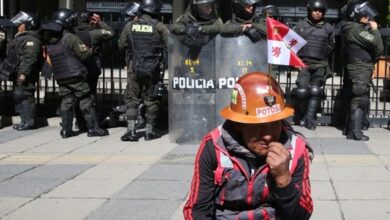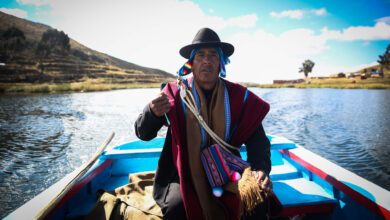Flight 980’s Vanishing Black Box: A Bolivian Aviation Enigma
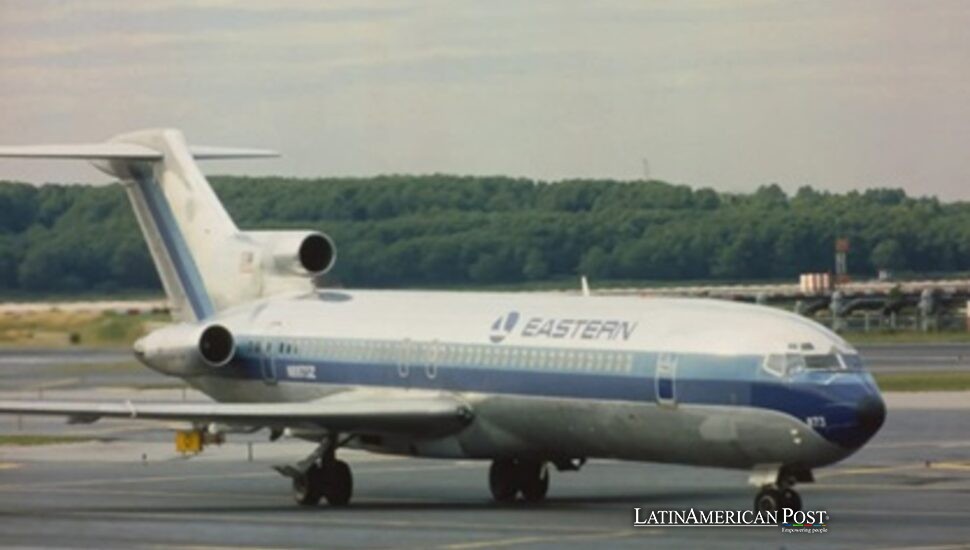
Nearly forty years have passed since Eastern Air Lines Flight 980 struck Bolivia’s Mount Illimani, scattering wreckage and rumor across its snowfields. The Boeing 727’s black box and the whole truth remain unfound despite repeated climbs- and whispered tales of contraband and sabotage.
A Fatal Collision in Bolivia’s High Andes
New Year’s Day 1985 should have been just another overnight hop for Eastern Air Lines Flight 980: Asunción to La Paz, a quick refuel, then Guayaquil and Miami. Yet midnight weather charts showed menacing clouds massing over the Andes. El Alto International Airport—already the world’s highest commercial runway at more than 13,000 feet—offered no margin for error. Pilots approaching La Paz speak of distorted altimeters, engines that gasp in thin air, and unpredictable downdrafts pitching jets toward rock.
At 8:38 p.m., Captain Larry Campbell radioed La Paz control for descent clearance. It was his last transmission. Thirty minutes of silence followed, and then rescue channels crackled with reports of an orange flash on Illimani’s south face. At first light, Bolivian Air Force spotters confirmed the worst: twisted aluminum littered a glacier almost 19,000 feet high, where winds roar beyond 70 mph. The 29 people aboard—Susan Watkinson, wife of the U.S. ambassador to Paraguay—stood no chance.
Recovery teams inched upslope but turned back within hours, defeated by avalanche risk and altitude sickness. From that day forward, the crash site lay largely untouched—an open grave preserved in ice and rumor. What drew Flight 980 so far south of its standard approach? Why did it carry barely a quarter of its seating capacity? And where investigators demanded, was the flight data recorder, the so-called “black box,” supposed to survive anything short of total annihilation?
Missing Black Box, Endless Conspiracies
In aviation disasters, the orange-painted black box is search priority one, as essential for truth-finding as a coroner’s autopsy. On Flight 980, it proved maddeningly elusive. Early climbers—local mountaineers lured by headlines—returned clutching passports, seat cushions, even unopened champagne bottles, yet no recorder. Later expeditions located the 727’s tail cone where the device should have nestled. The mounting evidence suggested not burial under ice but outright absence.
Speculation ignited. Some whispered of a contract hit aimed at Ambassador Dean Watkinson, who canceled at the last minute while his wife flew on. Others claimed the cargo manifest listed crates of exotic reptile skins, long favored by smuggling rings that funneled contraband through Miami. In the 1980s, Eastern Air Lines staff were caught more than once abetting cocaine routes; perhaps Flight 980 carried a load too valuable—or too incriminating—to risk discovery. Could someone have trekked Illimani first, pocketing the black box tape and illicit cargo?
Navigation theories spawned their subplots. The aircraft’s Omega radio navigation system could drift several miles; a storm-warped signal might have nudged the jet off course. Critics argued that professional crews cross-check instruments, and Captain Campbell, a 58-year-old veteran, knew the corridor intimately. Villagers east of the standard approach later reported hearing engines overhead, implying the jet flew a puzzling dog leg toward the mountain. Without cockpit audio or flight data, the path remains guesswork—one more blank in a case file thin on certainties and thick with loose ends.
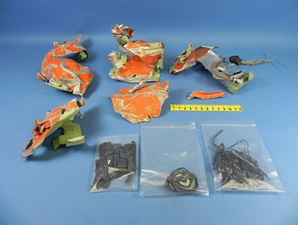
Materials recovered from the crash site/NTSB
Investigations That Deepened the Fog
Official response quickly frayed. Bolivia’s civil aviation agency cited “inhospitable terrain” and closed its inquiry in under a year, ruling controlled flight into terrain—pilot error during bad weather. The U.S. National Transportation Safety Board (NTSB) offered support, but Washington expected La Paz to lead in its backyard. Bereaved families grew furious. Eastern Air Lines, mired in labor strife and financial woes, wanted closure fast.
So, amateurs stepped in. In March 1985, a freelance flight engineer from Miami bankrolled a climb, photographing debris fields and noting a suspicious absence of human remains. He later alleged Eastern brass urged silence to avoid fresh litigation. That June, Geraldine O’Hara, widow of a Peace Corps director, hired Andean guides to fetch her husband’s ring. She reached the wreck within hours—no special gear, no government escort—and emerged baffled that officials called the site “inaccessible.”
Public pressure forced the NTSB to mount its expedition late that year. The mission became a textbook fiasco: too little acclimatization time, faulty radios, and budget constraints left climbers short of fuel and ropes. They scoured the tail section but abandoned the search after five days. The Board’s eventual statement—“search efforts were hindered by insufficient supplies, unpredictable weather, and extreme altitude”—sounded more like an apology than a verdict. No follow-up expedition ever materialized.
Meanwhile, gossip columns had a field day. Newspapers in La Paz printed claims of cocaine bricks stamped with airline logos, which prosecutors swiftly denied. U.S. talk shows hinted at CIA links, noting that Bolivia then hosted covert anti-narcotics operations. Each rumor fed the next, clouding the historical record until even seasoned journalists struggled to parse fact from myth.
Decades later, Google Earth and Wikipedia revived interest. In 2016, two American adventurers—Dan Futrell and Isaac Stoner—read an online footnote calling the crash site “unreachable” and took it as a dare. Equipped with mountaineering crampons and a GoPro, they scaled Illimani’s flanks, finding metal shards, oxygen masks, and even a charred pilot’s logbook. Among the rubble lay orange fragments they believed might be black box casings. Back home, the NTSB tested the plastic: it matched Boeing interior trim, not recorder housing—another clue dissolved.
Yet the pair’s photos revealed something new: with glaciers shrinking under climate change, wreckage once entombed in blue ice now poked into daylight. What else might surface as Illimani’s frozen armor retreats year by year?
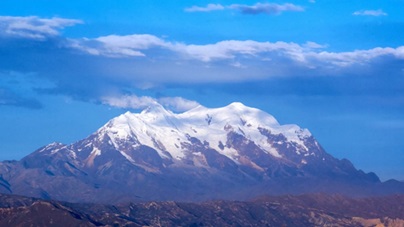
Mount Illimani. Wikimedia Commons/Hernan Payrumani
The Enduring Enigma and What Lies Ahead
Four decades on, the Flight 980 saga reads like a detective novel with its final chapter ripped out. Officially, the cause remains a nighttime navigational error compounded by storm clouds. Unofficially, countless questions still jostle for top billing:
Was contraband on board? Logbooks confirm nearly a million dollars worth of reptile skins were eventually recovered, but customs records list no narcotics.
Did someone reach the site first? Eyewitness interviews suggest climbers from a nearby mining town attempted looting days after impact; if so, could they have taken the recorder?
Could modern technology help today? Drone-mounted ground-penetrating radar, high-altitude helicopters, and lightweight ice saws weren’t available in 1985. Families of the 29 victims, now aging, still dream of answers. Susan Watkinson’s children keep a scrapbook of clipped articles and write periodic letters to U.S. members of Congress urging another search.
The mountain, however, is changing. Satellite imagery shows Illimani’s glaciers thinning dramatically since the 1990s. Where climbers once pitched tents on firm neve, crevasses yawn. That shrinkage, paradoxically, could uncover the very recorder no one could locate in the 80s or 90s. Engineers say the magnetic tape inside might still hold data if frozen—black boxes are built to endure 1,000 degrees Celsius for an hour and crushing pressure for days. Forty icy years might prove kinder than an open tropical hillside.
Eastern Air Lines no longer exists—liquidated in 1991—so any renewed recovery would fall to Bolivia’s aviation authority, perhaps aided by U.S. investigators under international convention. For now, no mission is on the calendar. Climbing permits remain easy; Illimani still beckons trekkers with its serrated skyline. One day, a rope team may kick steps across an exposed snow shelf and glimpse a bright orange cylinder half-melted from the glacier. Until then, Flight 980 inhabits a twilight zone of aviation lore: neither entirely forgotten nor fully solved.
As anniversaries roll by, Illimani keeps vigil—a silent witness of aluminum, secrets, and ice. Air crash experts teach that every accident writes new safety rules; every black box recovered is a lesson carved in circuits and tape. Flight 980 deprived the world of that lesson, leaving only rumors to echo off its ridges. Should humanity finally coax the recorder from the mountain’s grasp, one modest beep from its data reel could redraw the narrative and grant families the closure they deserve.
Also Read: Venezuela Vote Fuels Unity and Resolve Across Guyana’s Disputed Frontier
Until that day, the story remains unfinished—a riddle in the rarefied air above La Paz, where wind scours wreckage and time erases footprints, but memory endures.
Disclaimer: This article is based on publicly available information and historical records.



